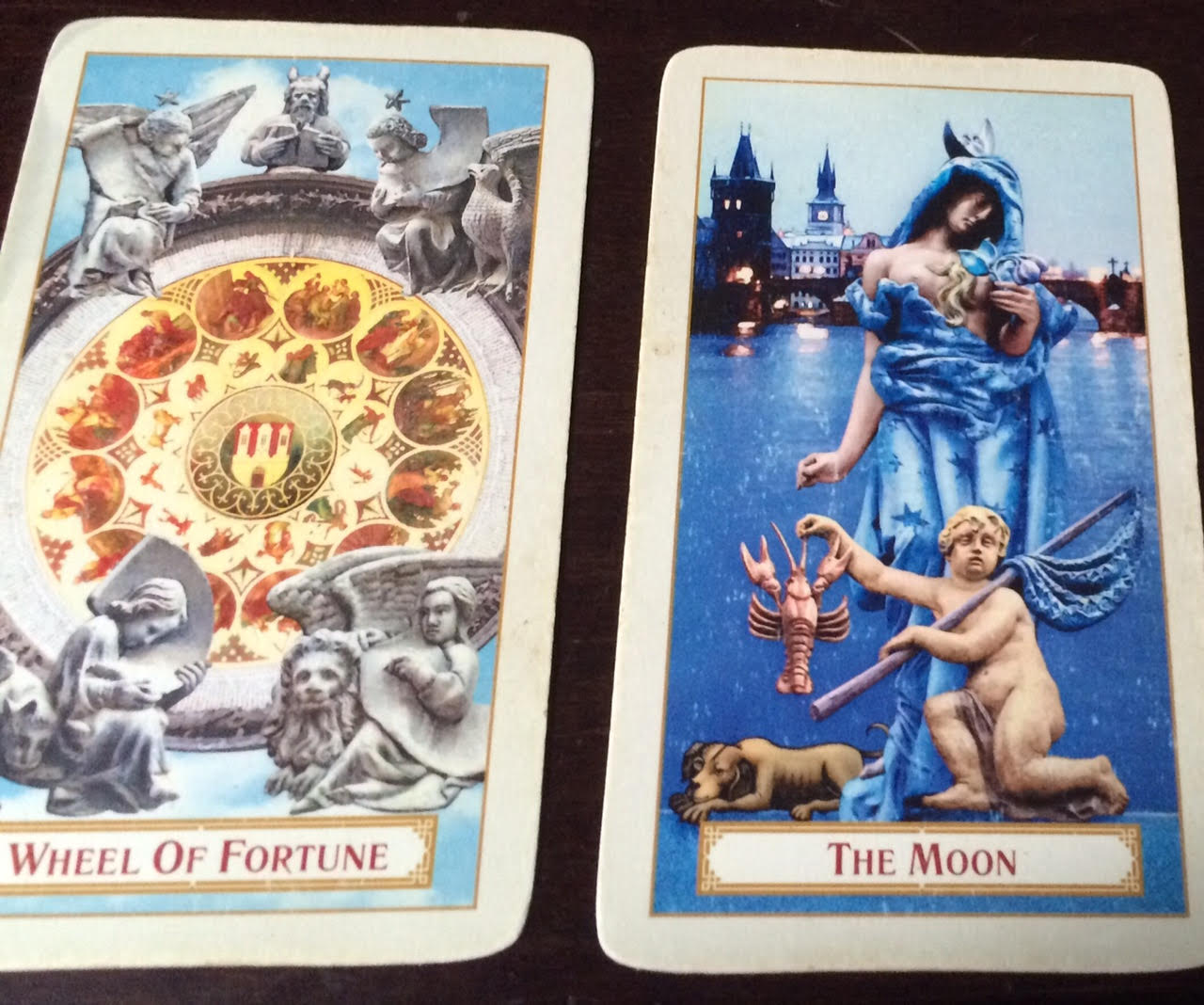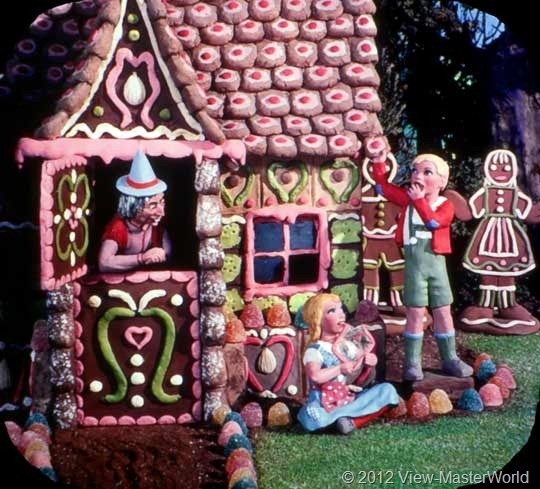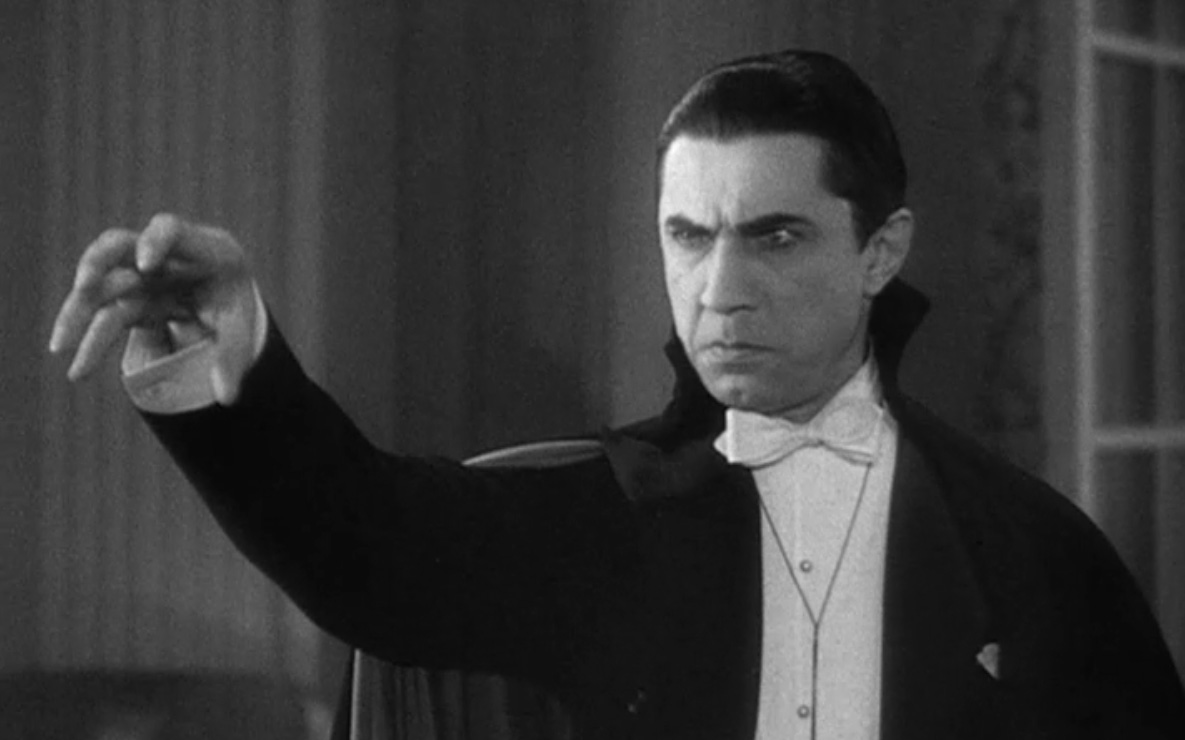
The Wheel of Fortune and The Moon — shown here from the Tarot of Prague deck, available from Baba Studios — are both associated with Pisces.
On February 18, the Sun begins its month-long voyage through Pisces, the sign of the two fish, which is associated with the eighteenth trump of the tarot, the Moon card. Pisces is traditionally thought to be ruled by Jupiter, associated with the tenth tarot trump, the Wheel of Fortune. The more modern idea that Neptune rules Pisces leads to the astrological sign’s association with the twelfth trump of the tarot, the Hanged Man. In the ancient world, Pisces was also associated with the land of Israel and the Jewish inhabitants there.
Neptune is the ancient god of the seas, and the Moon, depicted on the eighteenth tarot trump, controls the ocean tides. Appropriately, the sign Pisces belongs to the water element. The tarot’s watery suit of Cups illustrates scenes related to love, friendship and vicissitudes of human emotions. The Moon card is often interpreted as a warning that someone is not seeing clearly or is being deluded in some way, which are negative aspects of Pisces.
As a Water sign, Pisces is characterized by empathy and expression of emotions. Pisces people are considered to be compassionate, artistic, intuitive, gentle, wise, and musical although they can also be fearful, overly trusting, sad, desire to escape reality, or want to be a victim/martyr.
Pisces, together with the Wheel of Fortune and the Moon, ask everyone: What areas in life are you not seeing clearly? Are your actions motivated by love or by desire? Do you need to act with more compassion? Are you neglecting your spirituality for material gain?


